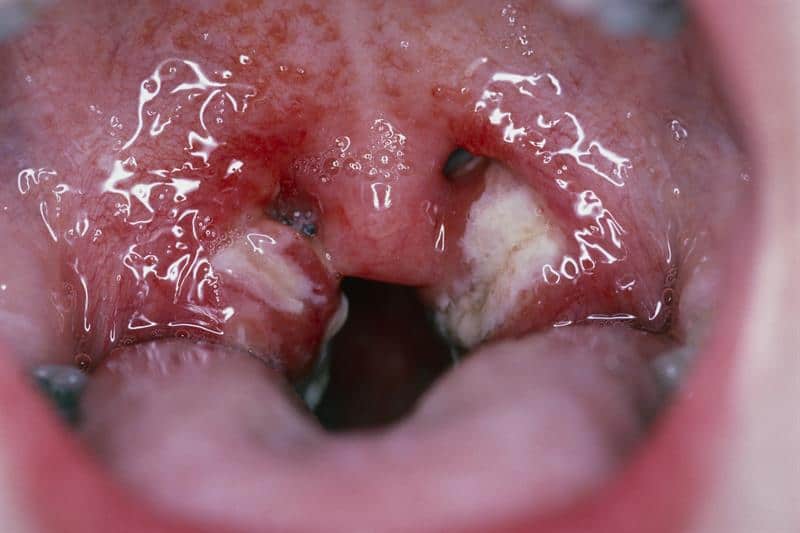What Every Parent Should Know About Glandular Fever Symptoms in Kids
Hey there, super parents! ? Are you concerned about your child’s health and well-being? You’ve come to the right place! Today we’re going to dive into the world of glandular fever, also known as infectious mononucleosis, or simply “mono”. It’s a common concern among parents, and being armed with knowledge is your first step in tackling this illness head-on! ??
First things first, let’s break down what glandular fever is. It’s an infectious disease commonly caused by the Epstein-Barr virus (EBV). While it can affect people of all ages, it’s especially prevalent among teenagers and young adults. No need to fret, though! Most cases are mild, and with proper care, kiddos bounce back in no time! ?
Spotting the Signs of Glandular Fever in Your Child
As caring nurturers, spotting when your youngster isn’t feeling up to snuff is vital. Let’s explore the signs and symptoms of glandular fever that you should be on the lookout for:
- Fever: As the name suggests, a fever is often a tell-tale sign. If your child has a persistent high temperature, it could be an indicator of glandular fever.
- Sore throat: Ouch! A sore, red throat, sometimes mistaken for strep throat, is another common symptom. It may be accompanied by difficulty swallowing due to the inflammation.
- Swollen lymph nodes: Have you noticed any unusual swelling around your child’s neck, armpits, or groin? This could be due to swollen lymph nodes, often a response to infection.
- Fatigue: Is your usually energetic munchkin feeling unusually tired? Excessive tiredness is a hallmark of glandular fever and can linger even after other symptoms have subsided.
- Headache: If your child complains of persistent headaches along with other symptoms, it’s worth considering glandular fever as a possible cause.
While these are some of the primary symptoms, glandular fever can also present with:
- Loss of appetite: Your little one might not feel up to their usual snacking shenanigans if they’re feeling under the weather.
- Muscle aches: Growing pains are one thing, but generalized aches can be a sign of this viral infection.
- Rash: Sometimes kids with glandular fever develop a rash – although not as common, it’s still something to keep an eye out for!
- Liver and spleen enlargement: In some cases, glandular fever may cause these organs to swell, but this is usually detected by a healthcare professional.
When to Seek Medical Attention
Most symptoms of glandular fever are manageable at home, but there are times when it’s important to seek medical advice. If your child’s symptoms are severe, not improving, or if they’re experiencing intense abdominal pain, it’s definitely time to see the doctor. This could be indicative of a swollen spleen, which requires immediate attention. ?
Treatment Options for Glandular Fever
Now, let’s chat about treatment. Since glandular fever is caused by a virus, there’s no specific cure. But don’t worry, there are plenty of ways to soothe your child’s symptoms and support their road to recovery:
- Rest is best: Encourage plenty of sleep and downtime, as rest is crucial for recovery.
- Hydration station: Make sure your little one is drinking plenty of fluids to fend off dehydration.
- Pain relief: Over-the-counter painkillers suitable for children, like ibuprofen or acetaminophen, can be used to reduce fever and relieve pain – but always follow the guidelines or a doctor’s advice!
- Throat soothers: Soft foods and throat lozenges can provide some much-needed relief for a sore throat (for older kiddos, of course).
Remember, your child’s health always comes first. If you’re ever in doubt, a chat with your pediatrician is the way to go! ?
Mom and Dad, you’ve got this! With your care and a healthy dose of knowledge, you’ll help your child navigate through glandular fever with flying colors. Stay tuned for more helpful tips and in-depth information as we continue our journey through understanding glandular fever and keeping our kiddos healthy and happy!

5 Things Parents Should Know in Preparing for Glandular Fever Symptoms
1. Be Aware of the Incubation Period
Glandular fever has a rather lengthy incubation period, typically ranging from 4 to 6 weeks. This means that if your child has been exposed to the Epstein-Barr virus, symptoms might not appear immediately. So, if there’s been a known exposure, mark your calendar and stay alert for symptoms over the following weeks.
2. Prepare a Comfortable Recovery Space
Since rest is essential, create a cozy recovery area for your child with plenty of pillows, blankets, and access to water and a thermometer. This will facilitate rest and allow you to monitor their fever closely.
3. Stock Up on Soft Foods and Throat Relief Aids
Prepare nutritious, easy-to-swallow foods like soups, yogurts, and smoothies. Keep hydrating drinks at hand, including water and electrolyte solutions. Throat lozenges and ice pops can also help provide some relief for older children.
4. Arrange for Assistance and Flexible Scheduling
Recovery from glandular fever can take several weeks, and fatigue can linger. You might need to adjust schedules and responsibilities to ensure your child gets the rest they need. Don’t hesitate to ask for help from family or friends if necessary!
5. Keep Communication Open with Your Child’s School
Inform the school of your child’s illness and discuss options for keeping up with schoolwork. Many schools can provide assignments for children to complete at home when they’re feeling up to it.
Understanding and Managing Fatigue during Recovery
One of the lingering effects of glandular fever is fatigue. It is important to understand that your child may take a while to return to their usual energy levels even after other symptoms have resolved. Encouraging a gradual return to activities rather than rushing back into a busy routine can help manage post-viral fatigue. Listening to their body and allowing extra rest periods throughout the day can make a big difference in recovery.
Avoid Contact Sports and Rigorous Activities
If a swollen spleen is present, it’s delicate and more susceptible to injury. Doctors recommend avoiding contact sports and vigorous activities until the spleen has returned to normal size and the physician gives the all-clear. This can typically take a few weeks to several months.
Monitoring the progress of your child’s symptoms and staying in touch with your healthcare provider is crucial. With patience, love, and the proper care, your child will have the best conditions for a smooth recovery from glandular fever. Keep your spirits high and know that each day brings your little one closer to feeling like their fantastic selves again. You’re doing great, parents!
See more great Things to Do with Kids in New Zealand here. For more information see here
Disclaimer
The articles available via our website provide general information only and we strongly urge readers to exercise caution and conduct their own thorough research and fact-checking. The information presented should not be taken as absolute truth, and, to the maximum extent permitted by law, we will not be held liable for any inaccuracies or errors in the content. It is essential for individuals to independently verify and validate the information before making any decisions or taking any actions based on the articles.




